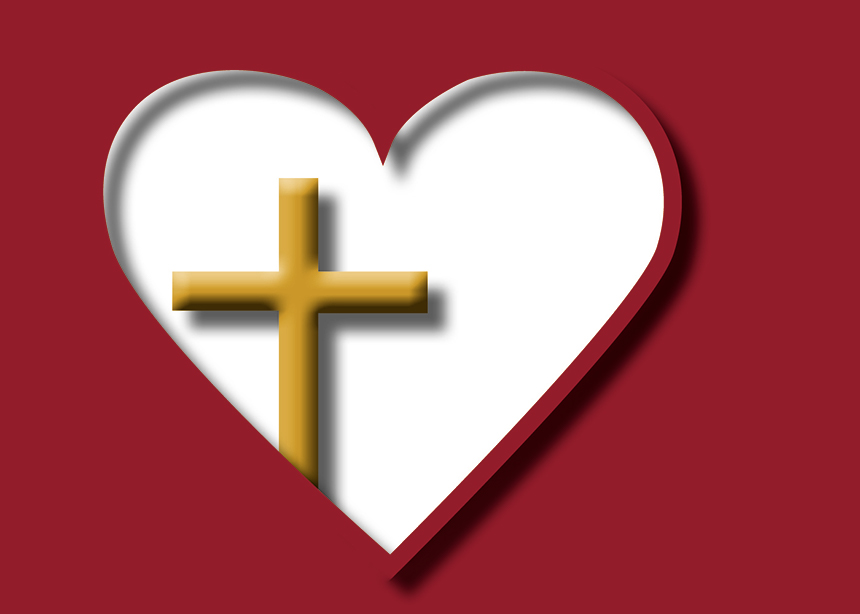I could not have predicted the responses I got when I asked 15 Mennonite Church Canada pastors—all women—how they would explain the meaning of the cross and resurrection to a 12-year-old.
When I was 12, the idea of “Jesus dying for my sins” didn’t make sense. I believed it in some sense but I also wondered, although never out loud, that if a price needed to be paid for my sins, why did God, being omnipotent, not hold a celestial sale?
Of the pastors I interviewed, several said that, as kids, they, too, had a fuzzy understanding of the central piece of the Christian story. One said that, although she did not understand the resurrection, she knew that “whatever it is, it works out.” The sad service on Friday was followed by a happy one on Sunday, with icing and sprinkles, in my case.
Several pastors said their understanding has changed over time. Some answered decisively, others wanted time to consider. One, I discovered, did a PhD on the question.
None gave the once-standard answer that Jesus died for our sins. This, despite: “He himself bore our sins in his body on the cross” (I Peter 2:24); and, “without the shedding of blood there is no forgiveness of sins” (Hebrews 9:22).
Adherents of the traditional view may find the murk and mystery in this article troubling or sacrilegious. I can say only that the people I interviewed spoke with conviction and passion. Any doubt I have does not extend to the sincerity of their pursuit of God.
Between old and new
Claire Ewert Fisher, a pastor of Mount Royal Mennonite Church in Saskatoon, told me that we’re caught between “more traditional language,” that “doesn’t always fit,” and the need for new language.
A pastor who asked for anonymity said, “We know what we don’t want it to sound like.”
This was characteristic of many of my conversations. Still, the pastors gave a wide range of answers, with some common themes.
Echoing others, Ewert Fisher said that with the cross and resurrection, “God chose to demonstrate his love in the most powerful way possible.” Jesus “expended all that he had for us.”
Again touching on a theme, she said the resurrection demonstrates that “death did not have the final word.”
Others added, “Love and life have the final word,” “Love is stronger than death,” and, “Suffering . . . injustice, brokenness, separation are never the final word.”
If people suffering generations of intractable injustice—or my 12-year-old son—asked what exactly this means, I’d stammer. Not everyone gets a Job-like rebound. Yet there is great solace in the proclamation.
Who killed Jesus?
A hard question to ignore. Did God essentially sacrifice his own son, using the human hands available, or did the powers of the day kill him because he was a threat?
I heard the latter from several pastors.
Lisa Martens of Hope Mennonite in Winnipeg has seen worldly powers eliminate threatening voices. She worked with Christian Peacemaker Teams in Iraq, Colombia, Puerto Rico, Mexico and South Dakota. She came to realize that the central Christian symbol—the cross— is “a torture device” and it has additional layers of meaning for people who have suffered violently.
She relates the oppressive forces she has witnessed and the forces that killed Jesus. “Jesus died because of violence and meanness and sin,” she said. He died because he “challenged the power brokers of the day.” He died “because of sin.”
That “structural sin” persists, she said. People and other living things are harmed because of the exploitative nature of the consumptive world we partake of. Cycles of violence and redemption continue, and our task is to translate Jesus’ “model of great courage” into this age.
Her understanding of the cross also makes Jesus the one who empathizes with the suffering. This was another common theme, although usually in terms less visceral than Indigenous people in Mexico gathering in the presence of the cross to commemorate a massacre.
What if God was one of us?
“The cross means God knows what it is like to be human and to suffer,” said Susanne Guenther Loewen of Nutana Park Mennonite in Saskatoon. Her doctoral work focused on the cross and resurrection. “God came to be one of us,” she said.
Patty Friesen of Osler (Sask.) Mennonite spoke about solidarity too, but differently. She described Osler’s Good Friday evening service, which is the favourite service of many congregants: People arrive in silence and relative darkness. It is a service of scripture and song. No bulletin, no extras. A pianist and several readers, one of them the voice of Jesus. Throughout the service, about 15 candles are extinguished by people who come up spontaneously. By the end, Jesus is quiet, the last candle is snuffed, the narrator and pianist turn off their lights, and everyone leaves in silence as the last bits of evening light fade.
She said that people “connect with Jesus in the suffering.” They think about their own losses. They find compassion. “We’re suffering, and Jesus suffered, too.”
“We’re so in our head all year long,” she said, “and Good Friday lets us get into something else.” It addresses spiritual needs, providing comfort, and then with Easter, promise and healing.
Friesen said the confident and triumphant trumpet playing “Christ the Lord is Risen Today,” which leads off the Easter service, says more than anything else.
Melody, mystery, story
Renee Sauder of Stirling Avenue Mennonite in Kitchener, Ont., recalled how, as a child, she comprehended the meaning of Easter through song: “As three hundred unaccompanied voices sang celebrative Easter hymns, I learned the promise and joy of resurrection.”
Anna-Lisa Salo of Bergthal Mennonite in Didsbury, Alta., said that on Easter, “we stand in the face of mystery,” and maybe children understand this best. She said we should “stand in this place of mystery and open ourselves to God.” Stated another way: “Know the stories and embed [yourself] in them.”
Charleen Jongejan Harder of North Leamington United Mennonite in Leamington, Ont., also sees the cross and resurrection in terms of finding our way into a story. She discussed my question with her 10-year-old son. They talked about other stories that help us relate to the Easter story:
- Like Star Wars. The dark path is easier and seems stronger, but the light has a deeper strength.
- Voldemort, the arch nemesis in J.K. Rowling’s Harry Potter series, does not understand the power of love, so everything about love seems foolish and incomprehensible to him. Harry wields the power of love, gaining the ultimate victory.
- In C.S. Lewis’s Chronicles of Narnia, the White Witch thinks she has control, but there is a deeper magic at work.
- In Madeline L’Engle’s young-adult sci-fi novel, A Wrinkle in Time, Meg rescues Charles Wallace from IT, a giant disembodied brain, using the one thing IT does not have: love.
The parallels have limits, and some people will chafe at these comparisons, but Jongejan Harder said that with kids it is important to get out of the head zone and into the story. We can easily get lost and lose each other in theological theories. Of course, that applies beyond youth.
She said she has a deep trust in story, in finding common stories, and in finding our way into the Bible, the grandest story.
Holy weakness
Narnia never worked for me, but my understanding of resurrection, wanting as it has been, is informed by literature—specifically Northrop Frye, the eminent literary critic. He wrote that resurrection is not a victory in the here and now but a liberating leap to a “dimension beyond the historical,” a whole other ball game.
Some Anabaptist thinkers argue that with the cross Jesus did not ensure a happy worldly ending. He did not overthrow the oppressive Romans, nor permanently boot money changers from the temple, nor make poverty history. He died not with a fist in the air, but with arms spread helpless. Out of holy weakness, mysterious power arises.
Caryll Houselander’s gentle proclamation about Easter has stuck with me over the years. She wrote the following as she and others scrambled to tend the injured in London during the terrifying bombing raids of the Second World War:
“It came to me like a blinding flash of light that Christ did not resist evil, that he allowed himself to be violently done to death . . . . He knew that the exquisite delicacy and loveliness of the merest detail of Christian life would survive the Passion, that indeed, far from being destroyed by it, it depended on it. And so it is now: that which is holy, tender and beautiful will not be swept away or destroyed by war . . . .”
To nail down meaning
It would be nice to have a clean answer to one of the biggest questions about Christianity.
Cheryl Braun of Glenlea Mennonite in southern Manitoba said it used to really bug her that she didn’t. But talking to older folks who find “contentment in simple things,” without needing to be right, has helped free her of the pressure to pin down an answer.
“You feel like there should only be one answer,” said Karen Sheil of Harrow (Ont.) Mennonite, “but when you go looking, there are a lot of different answers.”
Indeed. Answers in song, liturgy and in books I found mildly interesting as a kid. Comfort, grace, God’s nearness, healing, promise and, above all, immense, uncontainable love.
God broke through the darkness, as one young pastor said, and we get to be part of holding the light. God’s love will live on. No matter what happens, there is still grace, as Braun said, on the other side.
Christ is risen.
Will Braun is Canadian Mennonite’s senior writer.
For discussion
1. How did you understand the cross and resurrection when you were 12 years old? Has your understanding changed over time? What songs come to mind that express the meaning of the cross and resurrection? Why did early Christians choose the cross as a symbol of Christianity?
2. The substitutionary view of atonement implies that the suffering of Jesus on the cross frees us from punishment. What questions do you have about this perspective? An old gospel hymn says, “There’s power in the blood.” What do you understand this to mean?
3. Will Braun asks whether God sacrificed his son using human hands or whether Jesus was killed by the powers of the day. How would you answer this question? How does the meaning of the resurrection change, depending on who was responsible?
4. Can you think of contemporary stories that relate to the Easter story? Would you include the Chronicles of Narnia, Star Wars or the Harry Potter series?
5. What does the message that “Christ is risen” have to say about “holy weakness”? What are the ongoing mysteries about the cross and resurrection?
—By Barb Draper







Leave a Reply
You must be logged in to post a comment.